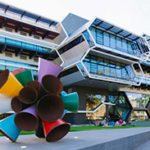-
22 Mar 2023 - 24 Mar 2023
9:00 am - 5:30 pm

Green Chemical Futures Building – click for map
Invitation-Only Event
FLEET is pleased to host the 2023 workshop on Future Electronic Materials Research in Australia – FEMRA2023 on 22-24 March 2023 at Monash Clayton, Level 4 Auditorium, Green Chemical Futures. The aim of this workshop is to discuss the potential ‘grand challenges’ that can be addressed by the electronic materials research community in Australia, and to plan how we can build the capacity, networks and funding support to address these challenges in the future. One potential topic for discussion is the ARC Centres of Excellence 2026 round (Expressions of Interest due mid-2024) but other domestic and international funding streams will also be considered.
The 2.5-day program consists of four symposia: topological phases of matter, materials for quantum simulation, materials for quantum technologies and light-controlled phases in materials. The program structure will be as followed:
- 12 noon – 5:30 PM Wednesday 22 Mar: Welcome lunch and Symposium 1
- 9 AM – 5:30 PM Thursday 23 Mar: Symposia 2 and 3
- 9 AM – 5:30 PM Friday 24 Mar: Symposium 4 and wrap up discussions
Attendance at the FEMRA2023 workshop is by invitation only, for further details about the event, please contact Dr Tich-Lam Nguyen at coo@fleet.org.au.
Symposia
Symposium 1: Topological Phases of Matter
Organisers: Kirrily Rule (ANSTO), Jan Seidel (UNSW), Oleg Tretiakov (UNSW)
Description: Topological materials is an international rising field of research (Nobel Prize 2016) involving k-space topology, material interfaces and various topological structures such as domain walls, skyrmions, solitons, etc. for novel applications in nanoelectronics. These nanoscale features are relatively unexplored in atomically thin materials (vdW, TMDCs, oxides, others), and FLEET CIs have an international leading edge in this area. Interesting long-term goals within this area are related to low-energy electronics and include logic @ 1 atto Joule per bit levels (collective order parameter systems, antiferromagnets), negative capacitance (oxides & domain walls), neuromorphic computing based on domain walls and skyrmions, real-space band engineering (topological transistors), investigation of polar metals, and novel ferroic 2D materials for versatile integration with vdW and other materials.
Symposium 2: Materials for Quantum Simulation — Engineering Artificial Superlattices to Realize Strongly Correlated Physics and Topology
Organisers: Deanna D’Alessandro (U Sydney), Mark Edmonds (Monash), Michael Fuhrer (Monash), Larry Lu (ANU), Nikhil Medhekar (Monash), Elena Ostrovskaya (ANU), Ben Powell (UQ), Agustin Schiffrin (Monash)
Description: The main focus of this symposium is new, engineered quantum materials that can be used as quantum simulation platforms for studying strongly correlated physics and topology. Such platforms can be realised in a variety of systems; of particular interest to this symposium would be switchable Mott insulators, frustrated lattices (for example kagome and other lattices), Moire superlattices, twistronic systems and magnetic topological systems. Many such systems are promising for electronic / spintronic / quantum applications. In particular, this symposium could aim for grand challenges in (1) quantum simulation – one of the four application areas of quantum technology, (2) spintronic devices, (3) topological quantum computing, and (4) low-energy Mott switches/memristors, which could be used for neuristors for neuromorphic computing.
Symposium 3: Materials for Quantum Technologies
Organisers: Peter Jacobson (UQ), Carla Verdi (U Sydney), Xiaolin Wang (U Wollongong)
Description: Quantum computers will provide solutions to many practical problems which will never be solved by classical supercomputers today or in the future. The last decades have seen the development of multiple quantum computing platforms, but error rates must be tamed to enable calculations of practical significance. To address these challenges, major advances in materials growth, nanofabrication, and first-principles calculations are needed alongside input from the quantum computing community.
Leading platforms pursued by industry giants, such as superconducting circuits, suffer from losses driven by surface and interface phenomena. Therefore, it is vital to mitigate these losses and develop characterization techniques that can inform the fabrication process. Likewise, new material platforms must be identified and explored as they may be intrinsically less prone to errors or better suited to large-scale architectures. This symposium aims to leverage Australia’s expertise in quantum technologies and focus on the condensed matter and material aspects of quantum computing such as topological phases, defects, interfaces, and the fabrication of devices.
Symposium 4: Light-controlled quantum phases in materials
Organisers: Jeff Davis (Swinburne), Elena Ostrovskaya (ANU), Agustin Schiffrin (Monash), Sumeet Walia (RMIT)
Description: Using engineered light to manipulate the properties of the material can enable versatile control over charge carrier densities, many-body quantum phases, band structure, topology, magnetic moments and magnetic order etc. These transient changes can be used for ultrafast switching in classical information processing, for creating spatially varying potentials and/or quantum phases to enable neuromorphic computing and other parallel processing protocols, for controlling quantum mechanical interactions that could form the basis of future quantum technologies, etc. Challenges to be addressed:
- Fundamental light-matter interactions for driving quantum phase changes. E.g. light-induced superconductivity, Floquet topological insulators, optical control of electronic and magnetic correlations ….
- Quantum phases in the strong coupling limit – E.g. exciton-polaritons, phonon polaritons, Cooper pair polaritons (eg via surface plasmon polariton coupling to superconductor), plasmonic structures coupled to other quantum phases.
- Implementations for information processing and quantum technologies (including spatial control of light fields via beam-shaping, plasmonic structures and meta-materials). E.g. neuromorphic computing, quantum simulation (eg non-Hermitian physics in exciton-polariton, artificial lattices via light-induced potentials and/or altered quantum phases), reconfigurable potentials for other parallel processing protocols.
Venue: Auditorium Level 4 Green Chemical Futures
Venue Website: https://www.monash.edu/green-chemical-futures
Address:
